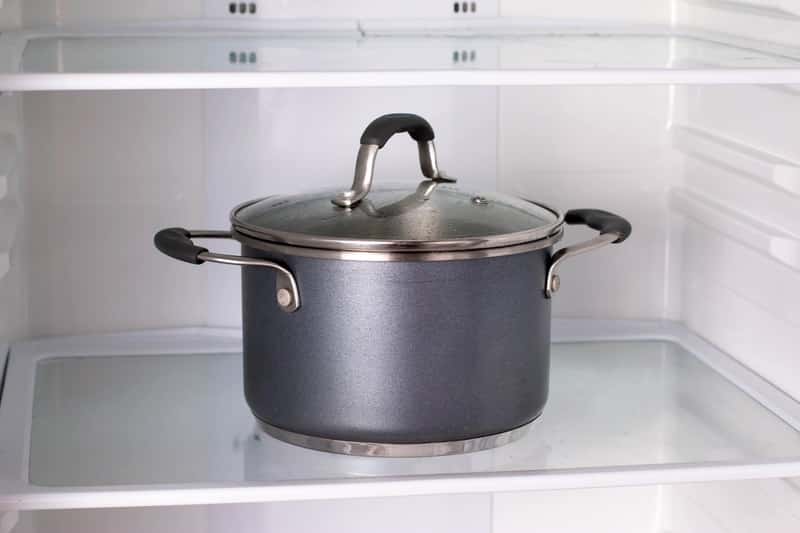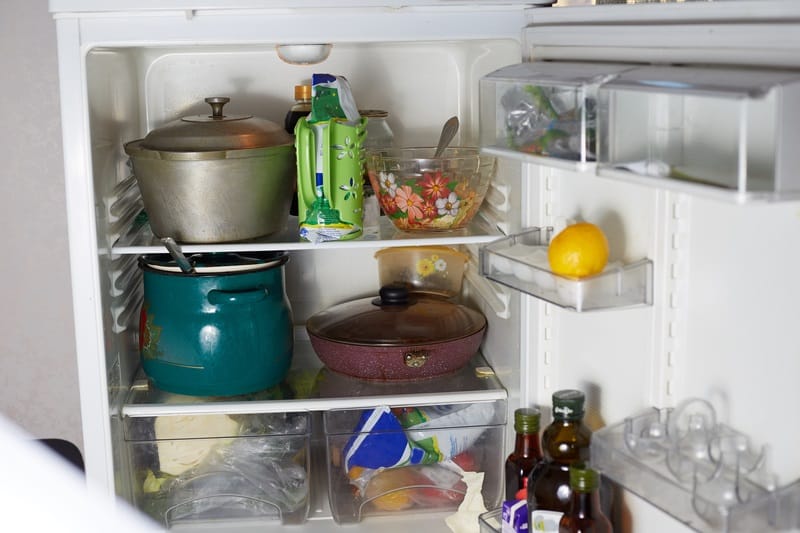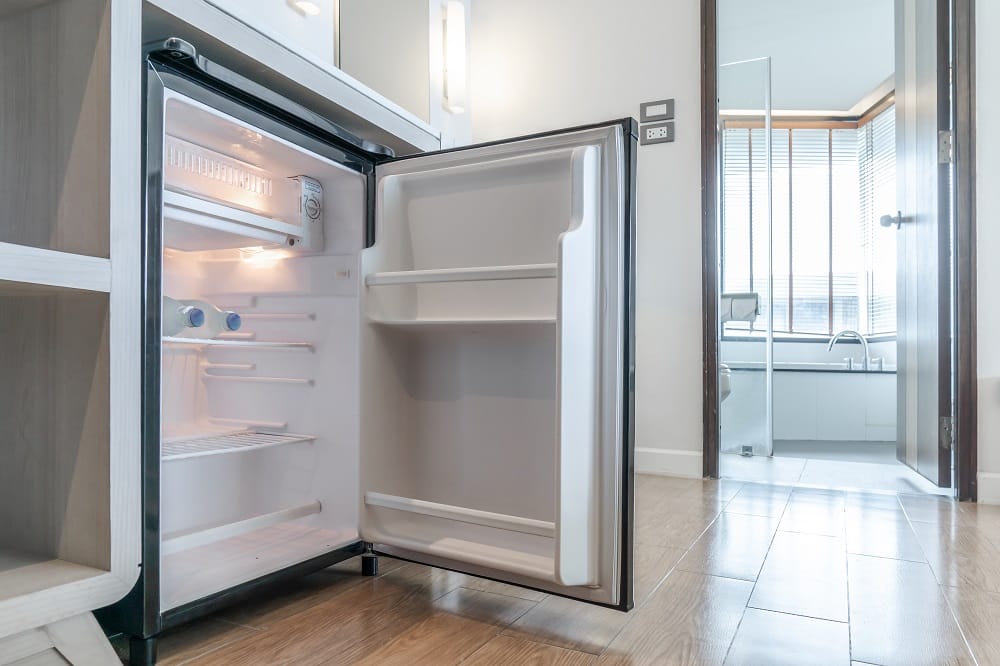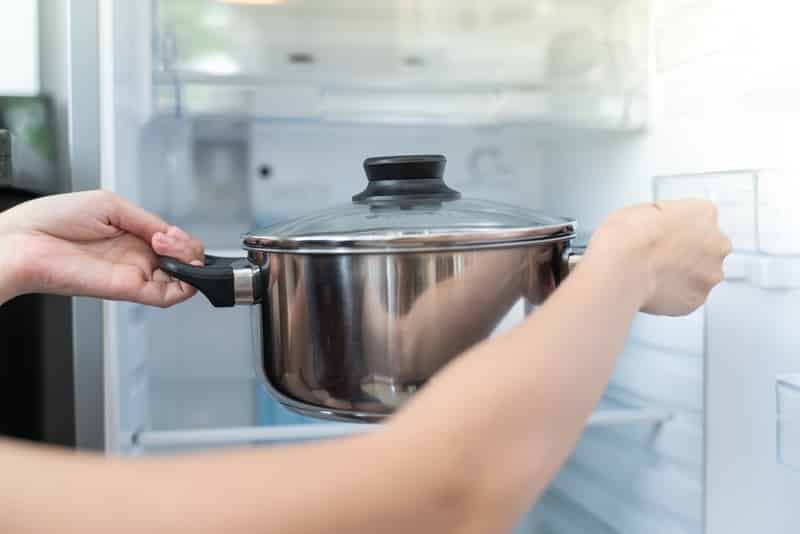
Storing foods inside the refrigerator is one of the simplest and best ways to keep them preserved and safe for later use.
That being said, sometimes you might want to store a lot of food all at once. To do so, you’ll need to put the entire pan or pot inside the fridge.
After an evening of cooking and eating a heavy meal, sometimes the last thing you feel like doing is transferring the leftovers into plastic or glass containers for storage in the fridge. Not to mention the extra dishes it makes later on!
Many people don’t know whether or not this is safe, which is why they tend not to do it. However, this isn’t necessarily true. Take a look at our article to learn more about storing pots and pans with food inside them in your refrigerator.
Storing Food in Pans and Pots in a Refrigerator
Many people believe that it isn’t safe to store a pot or a pan containing food inside the fridge. This is both true and not true, depending on the context.
Here’s when you should not put pots of food inside the fridge:
- When the pots are hot.
Food should always be cooled to room temperature before putting it and the pot into the fridge. This is because the hot pan/pot will ultimately decrease the overall temperature of the entire fridge.
When this happens, all the other food inside the refrigerator will become warm and might go bad much quicker. Warm environments allow bacteria to grow which is why this is a no-go.
- When storing acidic foods in reactive cookware.
Acidic foods include tomatoes, lemons, and vinegar. Reactive cookware includes aluminum, copper, iron, and non-stainless steel.
With this cookware, the acid in the food pulls metal atoms from the pans. This will discolor the food or give it a metallic flavor. Cooking and storing acidic food in this type of cookware is not a good idea.
- When you have a small amount of fridge space.
Pots and pans are an awkward round shape and their handles take up a lot of space. When your fridge space is at a premium, you will do better to use square or rectangular plastic storage containers.
- When you need to cool a large quantity of food that goes off easily.
It is very difficult for most home refrigerators to rapidly cool a big pot of food. If the food remains at an internal temperature of over 40 degrees for over two hours, it will be unsafe as bacteria will multiply in these conditions.
If you’re dealing with things that go off easily like chicken dishes, it is safer to transfer the food to smaller plastic containers for storage. These smaller containers cool more rapidly than a large pot, eliminating the danger of food poisoning.
Here’s when it’s safe to store pots of food in the refrigerator:
- Once the pot and its contents have cooled to room temperature, you may put them into the fridge.
If you need to cool the food down quickly, put the pot into the sink and run some cold water into the sink three-quarters of the way up the sides of the pot. If you can add some ice to the water, even better.
- When storing the food in non-reactive pots.
Even acidic foods can be safely stored in non-reactive cookware. This includes stainless steel, glass, glazed ceramic, or enamel-coated cast iron. Special anodizing coatings on some cookware create a barrier between the acidic food and the pan’s reactive metal.
Can food be stored in a crockpot in the fridge?
Yes, the inner pot of a crockpot can be stored in the fridge with food inside it. The inner pot is made of non-reactive ceramic. Provided you cool it down before putting it into the fridge, it is perfectly safe.
We hope this has helped to clear up some of the confusion regarding storing pots of food in the fridge. Let us know your thoughts in the comments section below!



Great article. I would suggest leaving the food uncovered until it has cooled thoroughly in the refrigerator. This speeds the cooling stage for the larger quantities. For plastic containers, leave them loosely covered such as with a lid placed on crooked so as to allow cooling air to enter the food. After it has cooled to refrigeration temperature, fasten the lid firmly into place to keep out bacteria and mold spores and to prevent drying out the food.